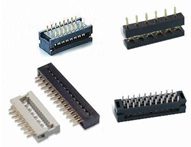The intelligent differential pressure transmitter is widely used. Jiangsu Xianda Instrument introduces you to the working principle of the intelligent differential pressure transmitter, the three commonly used measurement methods, the main installation methods and precautions, and
Fault diagnosis and analysis in the use of intelligent differential pressure transmitters.
First, the working principle of intelligent differential pressure transmitter:
The differential pressure from the double-sided pressure guiding tube acts directly on the double-sided isolating diaphragm of the transmitter sensor, and is transmitted to the measuring component through the sealing liquid in the diaphragm, and the measuring component converts the measured differential pressure signal into corresponding The electrical signal is transmitted to the converter, and is converted into a standard electrical signal output by amplification or the like.
Second, the fault diagnosis and analysis method in the use of intelligent differential pressure transmitter
In the measurement process of the transmitter, there are often some faults, and the timely judgment and analysis of the fault is crucial to the ongoing production. In fact, due to the interoperability of pressure transmitters and intelligent differential pressure transmitters in measurement applications, some of the methods in this paper are equally applicable to pressure transmitter fault diagnosis. Based on the experience in routine maintenance, we summarize some judgment analysis methods and analysis processes.
1. Investigation method: Review the fire, smoke, odor, power supply change, lightning strike, moisture, misoperation, and mis-maintenance before the fault occurs.
2, intuitive method: observe the external damage of the circuit, the leakage of the pressure guiding tube, the overheating of the circuit, the state of the power switch.
3. Detection method:
a disconnection detection: suspected faulty part and other parts separately, to see if the fault disappears, disappears if it is determined that the fault lies, as it may look into the next step, such as: Smart Smart Pressure Transmitter HART remote does not work Communication, the power can be disconnected from the body, and the transmitter is powered on by field power supply to check whether the cable is superimposed with electromagnetic signals of about 2 kHz and interfere with communication.
b. Short-circuit detection: In the case of ensuring safety, the relevant part of the circuit is directly short-circuited. For example, if the output value of the differential transmitter is too small, the pressure guiding tube can be disconnected, and the differential pressure signal is directly sent from the first pressure-taking valve. Directly lead to the smart differential pressure transmitter on both sides, observe the transmitter output to determine the plugging and leakage connectivity of the pilot line.
c. Replacement test: Replace the part suspected of being faulty and judge the fault location. For example, if the transmitter board is suspected to be faulty, you can temporarily replace it to determine the cause.
d. Division detection: divide the measurement loop into several parts, such as: power supply, signal output, signal transmission, signal detection, sub-section inspection, from simple to complex, from the table and inside, narrow the scope, find the fault position.
Antenk dip plug connector Insulation Displacement termination connectors are designed to quickly and effectively terminate Flat Cable in a wide variety of applications. The IDC termination style has migrated and been implemented into a wide range of connector styles because of its reliability and ease of use. Click on the appropriate sub section below depending on connector or application of choice.the pitch range from 1.27mm,2.0mm, and 2.54mm here.

IDC DIP Plug Connectors Key Specifications/Special Features:
Materials:
Insulator: PBT, glass reinforced, rated UL94V-0
Contact: phosphor bronze or brass
Electrical specifications:
Pitch: 1.27/2.0/2.54mm
Current rating: 1A, 250V AC
Contact resistance: 30M Ohms (maximum)
Insulation resistance: 3,000M Ohms, minute
Dielectric withstanding voltage: 500V AC for one minute
Operating temperature: -40 to +105 degrees Celsius
Terminated with 1.27mm pitch flat ribbon cable
Number of contacts: 06,08, 10, 12, 14, 16, 20, 24, 26, 30, 32,34, 40, 50, 60 and 64P
With RoHS mark
Used for ribbon cables
DIP Plug Connectors Application
Wire to Board
Apply to Industries : PC, IPC, Consumer Electronics, Automotive, Home Appliance, Medical
Dip Connector,Dip Plug Connector,Dip Direct Pulg Connector,IDC Plug Connector,Idc connector dip plug,1.27mm Dip Plug Connector,2.0mm Dip Plug Connector, and 2.54mm Dip Plug Connector
ShenZhen Antenk Electronics Co,Ltd , https://www.antenkelec.com